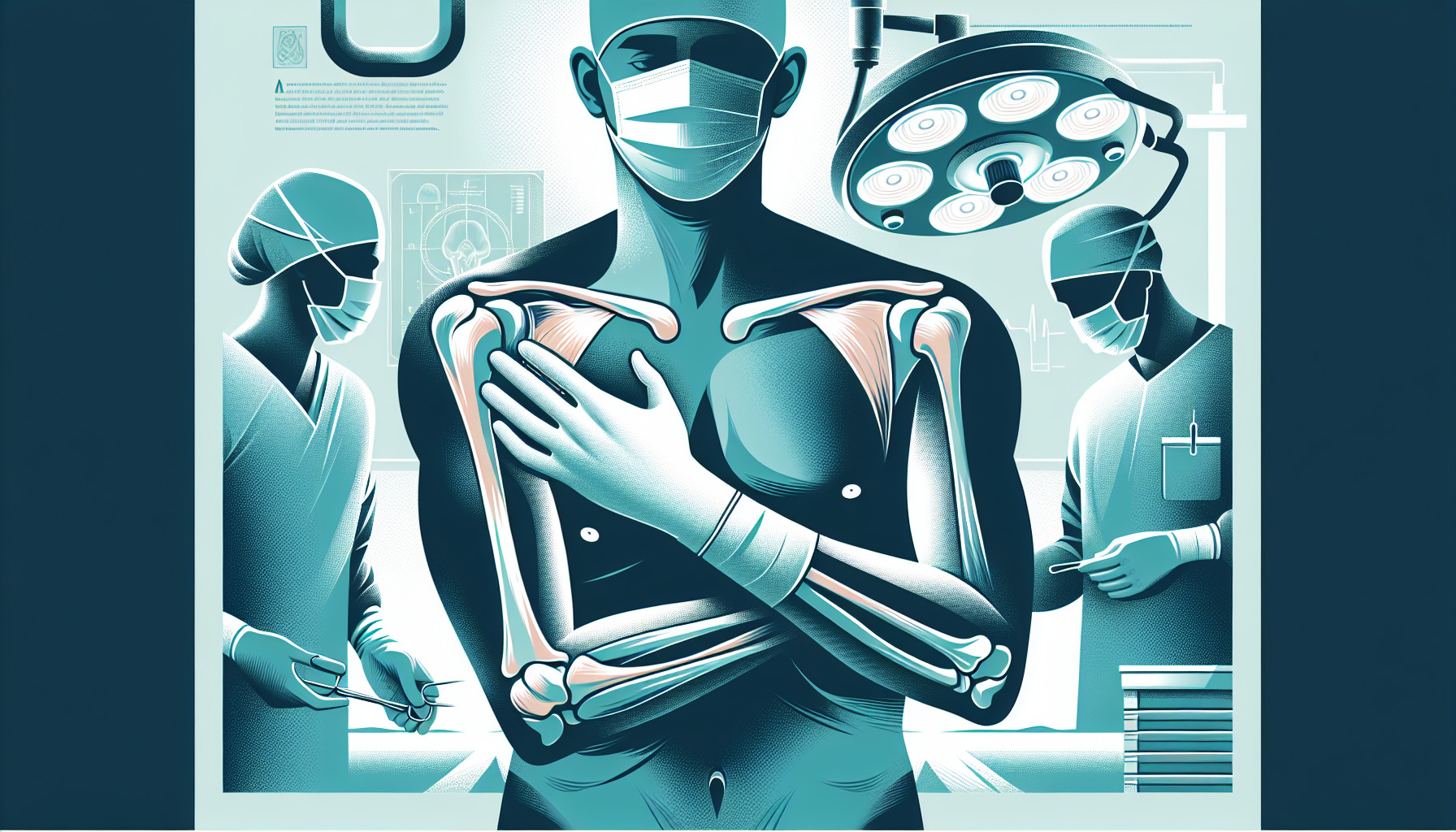Our Summary
This study aimed to compare the effectiveness of two different surgical techniques used to treat patients with bone and cartilage damage (osteochondral defects) in the shoulder joint, combined with a specific type of shoulder dislocation. These techniques were the traditional McLaughlin procedure and a new approach using custom-made implants created using 3D printing technology.
The study involved 20 patients who were treated for chronic shoulder dislocation at a Russian medical university between 2019 and 2021. Half of the patients were treated using the McLaughlin procedure and the other half received the custom-made 3D printed implants. Six months after their surgeries, all the patients were evaluated through various methods such as X-Ray imaging, CT scanning, range of motion measurements, and surveys to assess pain and quality of life.
The results showed that both surgical techniques improved shoulder motion, reduced pain, and enhanced the patients’ quality of life. There were no serious complications or any recurrence of the shoulder dislocation in either group. The length of hospital stay was similar for both groups. All the measurements and survey results showed significant improvements after surgery, with no significant differences between the two groups.
The study concluded that the use of custom-made 3D printed implants can make the surgery shorter and reduce the amount of blood lost during surgery compared to the traditional McLaughlin procedure.
FAQs
- What were the two surgical techniques compared in the study for the treatment of osteochondral defects in the shoulder joint?
- What were the results of the study comparing the traditional McLaughlin procedure and the new approach using custom-made 3D printed implants?
- How did the use of custom-made 3D printed implants influence the length of the surgery and blood loss compared to the traditional McLaughlin procedure?
Doctor’s Tip
One helpful tip a doctor might tell a patient about shoulder replacement is to follow the post-operative care instructions carefully, including attending physical therapy sessions and doing prescribed exercises to help regain strength and range of motion in the shoulder. It is also important to avoid any strenuous activities or heavy lifting during the recovery period to allow the shoulder to heal properly. Regular follow-up appointments with the doctor are also essential to monitor the progress of the shoulder replacement and address any concerns or complications that may arise.
Suitable For
Patients who are typically recommended for shoulder replacement surgery include those with severe shoulder pain, limited range of motion, and loss of function due to conditions such as osteoarthritis, rheumatoid arthritis, avascular necrosis, severe fractures, and chronic shoulder dislocation. These patients may have tried conservative treatments such as physical therapy, medications, and injections without success, and are experiencing significant disability and discomfort in their daily activities. Shoulder replacement surgery can help improve pain, restore function, and enhance quality of life for these patients.
Timeline
Overall, the timeline of a patient’s experience before and after shoulder replacement surgery can be summarized as follows:
Before surgery:
- Patient experiences chronic shoulder pain and limited range of motion due to bone and cartilage damage.
- Patient undergoes various diagnostic tests and consultations with a healthcare provider to determine the need for surgery.
- Surgical technique options are discussed with the patient, including the traditional McLaughlin procedure and the custom-made 3D printed implants.
- Surgery is scheduled and pre-operative preparations are made, including physical therapy and medication management.
After surgery:
- Patient undergoes shoulder replacement surgery using the chosen technique (McLaughlin procedure or custom-made 3D printed implants).
- Patient is monitored in the hospital for a few days post-surgery to ensure proper healing and management of pain.
- Patient begins physical therapy and rehabilitation to regain strength and range of motion in the shoulder.
- Follow-up appointments are scheduled to monitor progress and address any concerns or complications.
- Six months post-surgery, patient undergoes evaluations to assess the effectiveness of the surgery, including X-Ray imaging, CT scanning, range of motion measurements, and quality of life surveys.
Overall, the goal of shoulder replacement surgery is to improve shoulder function, reduce pain, and enhance the patient’s quality of life. Both the traditional McLaughlin procedure and the custom-made 3D printed implants have been shown to be effective in achieving these outcomes, with the latter potentially offering advantages such as shorter surgery time and reduced blood loss.
What to Ask Your Doctor
Some questions a patient should ask their doctor about shoulder replacement include:
- What are the risks and potential complications associated with shoulder replacement surgery?
- How long is the recovery process and what can I expect in terms of pain management and physical therapy?
- Will I need any additional imaging tests or consultations before the surgery?
- How many shoulder replacement surgeries have you performed and what is your success rate?
- What type of implant will be used in my surgery and why is it the best choice for me?
- Are there any restrictions or limitations on my activities after the surgery?
- What is the expected outcome of the surgery in terms of pain relief and improvement in shoulder function?
- How long will the implant last and what follow-up care will be needed in the future?
- Are there any alternative treatments or procedures that I should consider before deciding on shoulder replacement?
- Will I need to make any lifestyle changes or adaptations after the surgery?
Reference
Authors: Pavlov DV, Korolev SB, Kopylov AY, Zykin AA, Gorbatov RO, Illarionova TV, Gorin VV, Alyev RV. Journal: Sovrem Tekhnologii Med. 2022;14(3):50-55. doi: 10.17691/stm2022.14.3.06. Epub 2022 May 28. PMID: 37064805
